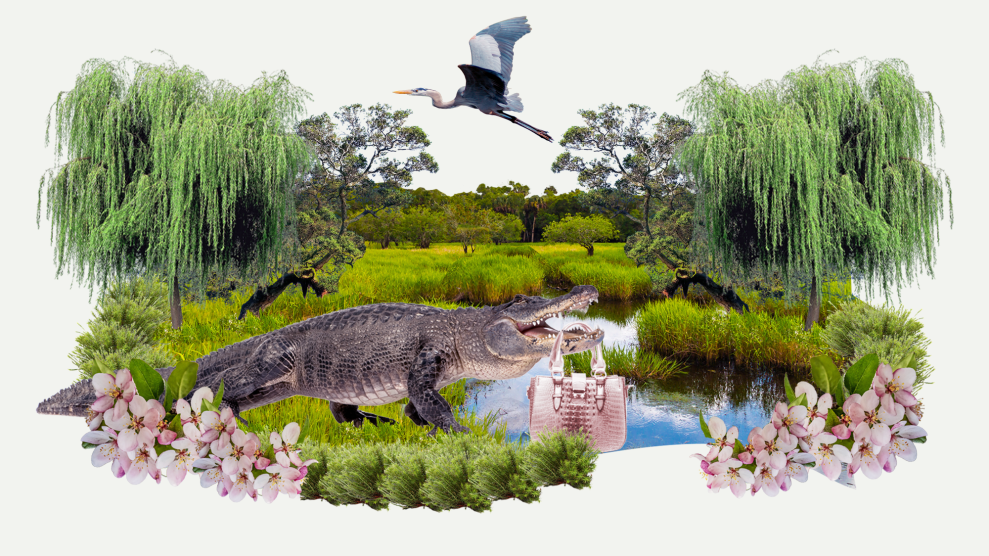The Endangered Species Act has been one of the country’s most valuable environmental tools, but it faces new threats. As the law turns 50, we’re asking whether this “pit bull” of an environmental law, as one expert described it, can survive the challenges of our time—from political attacks to climate shocks. You can read all the stories here.
Given its longstanding status as one of America’s strongest environmental laws, some of the Endangered Species Act’s most loyal champions are wary of pointing out its flaws. There’s an old phrase in politics that describes this sentiment, “a camel’s nose under the tent,” which I’d first heard on a phone call earlier this year with Rep. Don Beyer, a Democrat from Virginia. He used it to describe how House Republicans have launched a series of attempts to “modernize” the act in recent years. While Beyer admitted there was, probably, room to improve the 50-year-old law, he knew some of his Democratic colleagues worried that “tuning up” the act would make it vulnerable to bigger, harmful changes. If you let the Republicans get the camel’s nose under the tent, he said, “pretty soon the whole camel is in the tent and the act is gone.”
But as someone who’s covered the Endangered Species Act for years, I can tell you the landmark legislation, significant as it has been, is far from perfect. And as I thought about the ESA’s half-century legacy, I wondered: What if we could reimagine the act? So, I posed this question to a handful of experts: If they had a magic wand, how would they change it?
I heard from Lowell E. Baier, a historian, lawyer, and author of the new history, Codex of the Endangered Species Act; Joe Roman, a marine ecologist and author of Listed: Dispatches From America’s Endangered Species Act; and Andy Mergen, an environmental law professor at Harvard University and the former chief environmental appellate lawyer at the Department of Justice. I also included a response from Lee Talbot, a co-author of the original Endangered Species Act, from a conversation we had a few years ago before he died in 2021. As you’ll read below, their ideas ranged from practical tweaks to philosophical musings about conservation to optimistic reimaginings of the law that would meet the most pressing environmental challenges of our time.
Here are some of their ideas:
Deploy a forgotten, broad directive hidden within the Act.
There’s a provision in the ESA called section 7(a)(1) that has “never really been well utilized,” says Mergen, a former federal lawyer. It directs federal agencies and the whole federal government to “utilize their authorities in furtherance of the purposes of this Act”—in other words, go out and do good for endangered and threatened species. “It’s a very amorphous command and amorphous commands in the law are easily ignored,” Mergen explains. “But I think this is a critical moment.” He believes the provision could be deployed to direct regulatory agencies to be more proactive than reactive—and help address major environmental issues like climate change and the global rise in extinction rates. Rather than simply dole out regulatory sticks, he posits, what if we could require all federal agencies “to take stock of their responsibilities, and to develop affirmative programs for conservation?”
Take electrification, he says. Securing a permit to build infrastructure, green or not, can be cumbersome and time-consuming. Some advocates argue there is some urgency, and we need electrification now, while others worry about the negative environmental consequences of moving too quickly. If agencies like the Bureau of Land Management, which manages public land, proactively sought to understand where species were, how they live, and what they depend on for survival, Mergen says, it could speed up permitting decisions for things like transmission lines or solar panels on BLM lands without leaving imperiled species in the dust.
Define what “critical habitat” actually means.
When the federal government lists a plant or animal under the ESA, it’s also supposed to identify “critical habitat” for the species. The act defines critical habitat as land that is “essential to the conservation of the species.” Such a designation doesn’t mean the land is protected in the way a national park or preserve is; it simply requires federal agencies to consider the impact of the projects they fund, authorize, or carry out on those areas. According to the Supreme Court, writing in 2018, “critical habitat” must be habitat, but it’s unclear what, exactly, habitat is in the law’s eyes. Baier, as a lawyer and a leading expert on the history of the ESA, tells me that if he had a magic wand he would use it to “look carefully” at how critical habitat is defined and designated.
At the same time, critical habitat designations can backfire, adds Christopher Segal, a lawyer in Baier’s firm, over email. Property owners who fear their lands may be at risk of being designated as critical habitat may be incentivized to avoid maintaining the land, or even to destroy it—a “perverse incentive” of the law. Which brings us to our third improvement:
Write in more “carrots” for landowners.
During a conversation in 2018, three years before he died, I asked Talbot what score he’d give the ESA on a scale from 0 to 10. “Do you know any legislation that would get a 10?” he asked, implying that he’d score it on the high end. But there was one area he said he’d improve if he could do it all over again: “One of the things that the act did not adequately cover was private lands, private landowners,” he told me. According to the Fish and Wildlife Service, about half of threatened and endangered species live in habitats that fall on private land. “If I was to be doing this again,” he told me, “I’d spend more time working out incentives for private landowners to be effective conservationists.” (I wrote about one species, the Venus flytrap, where motivated private landowners can make a big difference.)
Consider entire ecosystems, not just individual species.
In the most contentious battles involving the ESA—the spotted owl or the red-cockaded woodpecker, for instance—”people ended up hating these animals,” Roman says, and by no fault of the critters. By the ESA’s design, individual plants and animals are often the focus of recovery, rather than the vast ecosystems they inhabit. “Shifting to landscape-scale conservation,” the marine ecologist says, “would be huge.”
Rather than simply protecting bits and pieces of habitat, he’d focus on the idea of ecological functions, and restoring species’ ecological roles, asking: How do a plant or animal’s habits—what it eats and what it excretes—connect to other species in the same forest, stream, desert, etc? Some legislation already does this, Roman explains, like Australia’s Environment Protection and Biodiversity Conservation Act. What he’d do, essentially, is “look at relationships, and the dynamism within ecosystems.” Roman isn’t alone on this: In a September letter to President Joe Biden, a coalition of more than 250 environmental groups outlined several steps his administration could take to stop the global decline of wildlife, including adopting an “ambitious ecosystem-based framework” in the US’s conservation plans, and suggesting it “prioritize the protection of key areas that will increase ecosystem resiliency and preserve biodiversity hotspots in the United States,” among other important habitat areas.
Embrace de-listings.
Twenty years ago, Roman says, “there was a lot of resistance to delisting species” like the bald eagle or the humpback whale. People were reluctant to let them go in part because it would mean losing important habitat protections. “I think that worked against us,” he says, considering it to have been a missed opportunity to show that the ESA works. “And it does,” he says. “It clearly prevents extinction. I think we really want to celebrate that.” There have been several success stories, like the American alligator, brown pelican, and grizzly bear, which all rebounded after the passage of the ESA. Those stories, he says, can energize and motivate the public.
Take humpback whales off the coast of New York City: “There’s now whale watching, and people are really excited to have these species around,” he says. “When these species come back, it can make a big difference in the way people embrace wildlife.”
Also: Consult with tribes.
With all of the above reforms, the federal government could consult and seek partnerships with tribal governments, a change that wouldn’t require re-writing the ESA at all. According to the Fish and Wildlife Service, tribal lands comprise more than 85 million acres in the contiguous US and Alaska. In its letter to Biden, the “Endangered Species Act at 50 Coalition,” which includes the Natural Resources Defense Council and the Center for Biological Diversity, called on the federal government “to recognize and incorporate indigenous knowledge and practices to support conservation and biodiversity, safeguard the rights and needs of indigenous peoples, and ensure social equity and justice in decision-making.”














